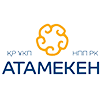In order to improve the investment attractiveness of the Oil and Gas Industry and replenish the resource base, in Kazakhstan legislative reforms were carried out and a new Tax Code and the Code on Subsoil and Subsoil Use were adopted. Vice-Minister of Energy of the Republic of Kazakhstan Aset Magauov explained how the new legislation works.
“Within the framework of the Subsoil Code and the Tax Code, there are provisions to stimulate exploration, simplify the procedure for granting subsoil use rights, simplify procedures for negotiating contracts, project documents and reporting,” Asset Magauov, Deputy Minister of Energy of the Republic of Kazakhstan, told in an interview to “Siberian Oil and Gas” magazine.
According to him, “the system of taxation of subsoil users has undergone dramatic changes in terms of minimizing taxes. As of 2019, the commercial discovery bonus has been canceled as a type of tax. ” It was decided to introduce an alternative subsoil tax for offshore and ultra-deep deposits (over 5000 m).
“This tax is not additional, but represents an opportunity for a subsoil user to alternatively fulfill their tax obligations to pay: mineral extraction tax; payment of reimbursement of historical costs; excess profit tax; rental tax on oil exports” explained the vice minister.
That is, by introducing an alternative tax, the emphasis of the tax burden is transferred directly to the moment of income.
In order to stimulate exploration and partial reimbursement of expenses incurred in case of unsuccessful exploration, the subsoil user for hydrocarbon raw materials was given the right to compensate for the exploration expenses incurred from income from contracts for the extraction of raw materials by deducting a group of depreciable assets as deductions, but not exceeding 25%. The norm will only apply if there are simultaneous production and exploration contracts.
Aset Magauov also said that by 2025 it is planned to increase oil production in the republic to 105-107 million tons.
He noted that in order to increase oil production on large projects, projects of modernization and expansion of capacities are being implemented. In particular, a Future Growth Project at Tengiz field is being implemented, expansion of gas re-injection capacities will be carried out at the Kashagan field, and a project will be extended to extend the production shelf at the Karachaganak field.
To obtain an additional influx of oil, RoK companies also use various methods to increase oil recovery:
flow diverting technologies, waterflooding, crude gas injection, horizontal well drilling, polymer flooding, hydraulic fracturing, etc.
Also, Mr. Magauov noted that over the past five years in the oil and gas industry, the share of local content in the procurement of goods has increased by1.6 times – from 74 to 120 billion tenge.
“Given that the volume of purchases of goods at three large projects (Tengiz, Kashagan, Karachaganak) is 50% of the entire oil and gas sector, the main growth potential of local content and the availability of a reserve for the development of domestic engineering is concentrated on these projects,” – he said.
According to him, in the procurement of three main operators over the past five years, the share of local content in goods increased by 1.3 times – from 15 to 19 billion tenge.
In other fields, the share of local content in goods increased by 1.6 times – from 62 to 101 billion tenge.
In 2018, TCO, KPO and NCOC operators imported goods worth about 245 billion tenge, of which only 19 billion tenge, or 7.3%, were purchased from local manufacturers. While on other projects, the local content in goods was 38% in the amount of 101 billion tenge.
The Vice Minister of Energy said that in accordance with the instructions of the Prime Minister of the Republic of Kazakhstan Askar Mamin, the Ministry of Energy together with the Ministry of Industry and Infrastructure Development of the Republic of Kazakhstan formed a working group on the development of oil and gas engineering with the participation of three operators and local manufacturers. Within this group, working meetings and videoconferences between technical specialists were held, procurement of all subsoil users was analyzed, after which a list of 26 types of engineering products for further localization was determined, and an action plan for the development of oil and gas engineering for 2019-2025 for a total amount of 58 billion tenge was developed.

